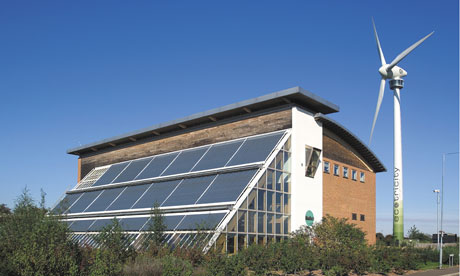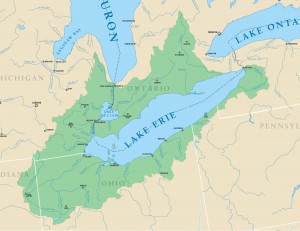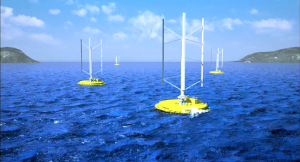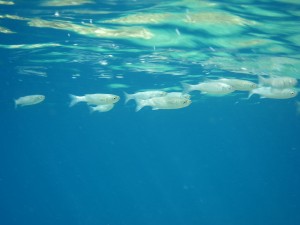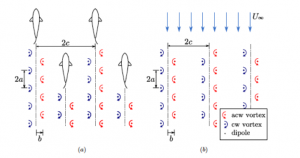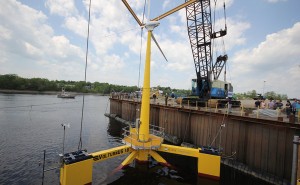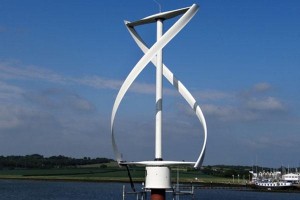As we’ve mentioned before,regular, horizontal-axis turbines can only harvest wind energy at a set range of speeds. If there is too little wind, the blades won’t turn. If there is too much, the turbine stands a risk of going far too fast and damaging the machinery. Because of this, many turbines actually include a mechanism to slow them down if the wind is blowing too fast.
But vertical turbines don’t have this problem. The vertical design allows the turbine to harvest wind from any direction and nearly any speed, making them ideal for a variety of different settings. Believe it or not, some of these turbines can even handle the turbulence from a jet plane.
Turbines in Martha’s Vineyard
Eastern Wind Power, a United States wind energy company, wanted to make a turbine that could work well in urban or rural settings, where the speed of the wind can change rapidly. So they developed the Sky Farm 50-kW VAWT, a turbine that can be placed almost anywhere.
The Sky Farm sits on a 20 ft base. That’s pretty small for a turbine, but this VAWT is flexible enough to sit on rooftops, poles, or other preexisting constructions. It’s also available in a mobile form, allowing you to bring your wind energy with you.
To test the strength of the turbine, the Sky Farm was set up at Martha’s Vineyard, and subjected to the turbulence from jet planes taking off. The turbine easily handled winds up to 110 MPH – that’s the force of a strong hurricane.

Image credit Windpower Engineering and Development.
Small Turbines, Big Impact
The Sky Farm is particularly useful for developing countries and disaster relief programs. Since the turbine has such flexible positioning, it can be set up in areas with little infrastructure; the small, mobile size makes adding one to an area a fairly easy process. In addition, the mobile version of the turbine can be used as a generator in areas that recently lost power.
Smaller turbines don’t generate as much power as larger ones, but that doesn’t mean they should be overlooked. If the wind can be captured and used efficiently, even a small breeze can be useful.


